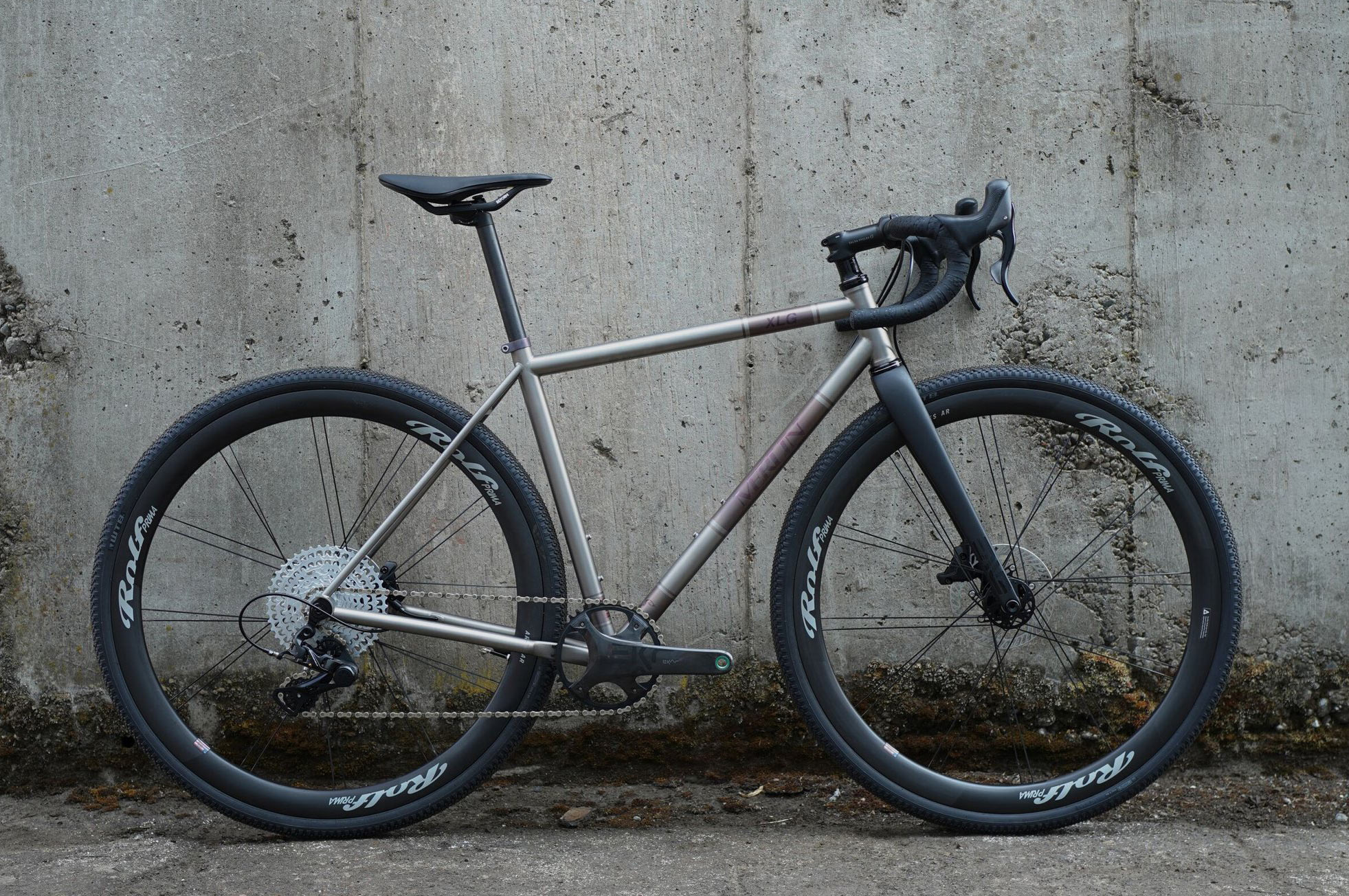Designed to cover any off-pavement surface, from sand to stone (get it?), the new Merlin Sandstone XLG gravel bike comes in two versions with tons of options.
The Sandstone 40 and 50 are for All-Road and Gravel with 40mm and 50mm max tire clearance, respectively. The 40’s geometry has tight 420mm chainstays and head angles from 71º to 72º. And the chainline is optimized for 2x road bike drivetrains.
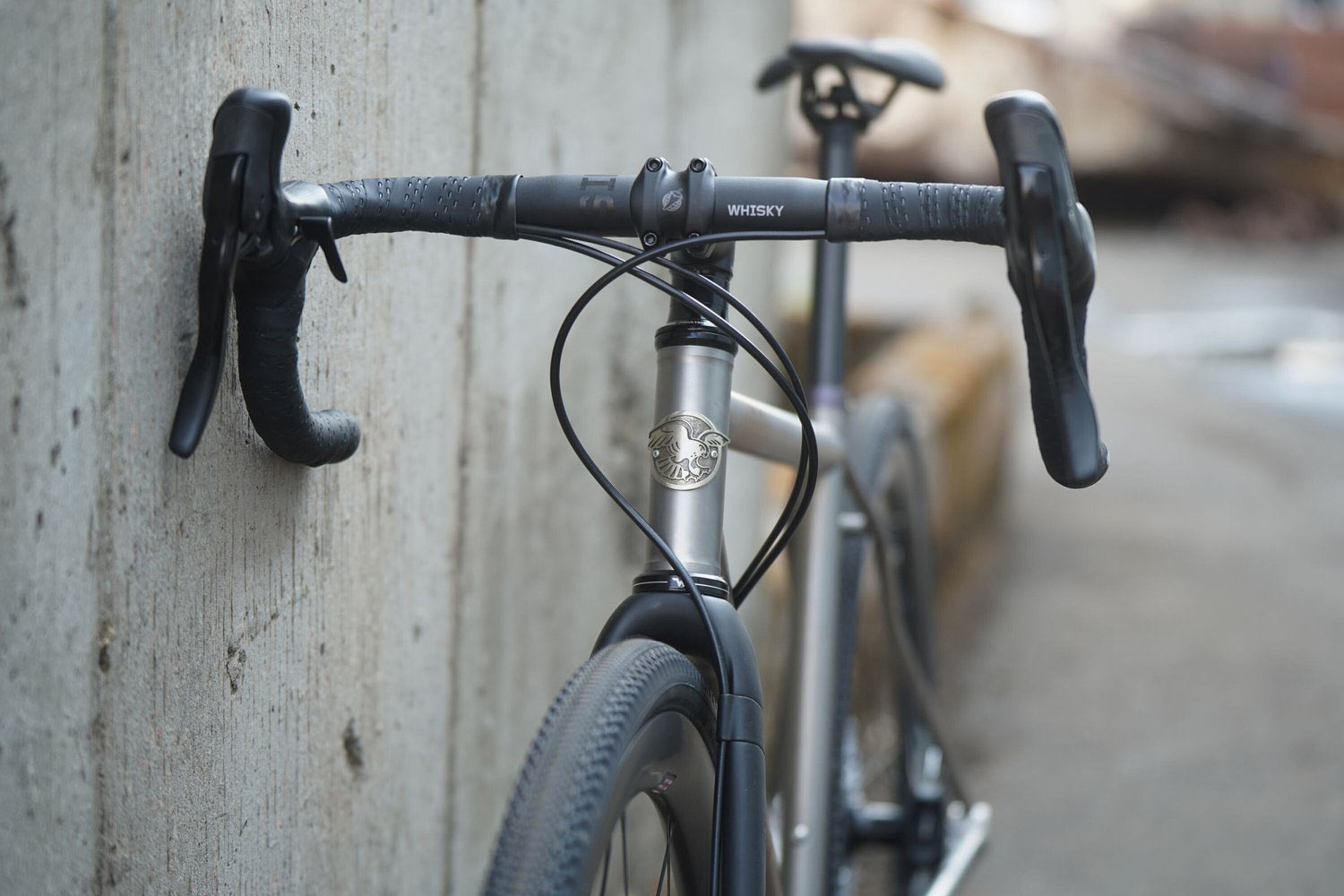
The 50 stretches the chainstays to 428mm to clear bigger 700×50 tires, with a chainline optimized for slightly wider 2x gravel chainring offsets…but you can definitely run it 1x, also. It fits wide-range gearing and is fully compatible with all 1x and 2x gravel drivetrains – Shimano, SRAM, and Campagnolo.
Geometry is a bit more relaxed for mellower, more stable handling. The 52cm frames and up are 71.5º to 72º, which seems counterintuitive. They say the bigger tires plus increased fork axle-to-crown height and different fork offsets give it more trail. That plus the longer chainstays combine for a longer wheelbase, and that gives a steadier ride.
The smallest two sizes (46 & 48cm) of the Sandstone 50 switch to 650b wheels and have a 70º head angle. Both models have eight stock sizes available, or go custom for an upcharge.
3D-Printed Parts & Shared Details
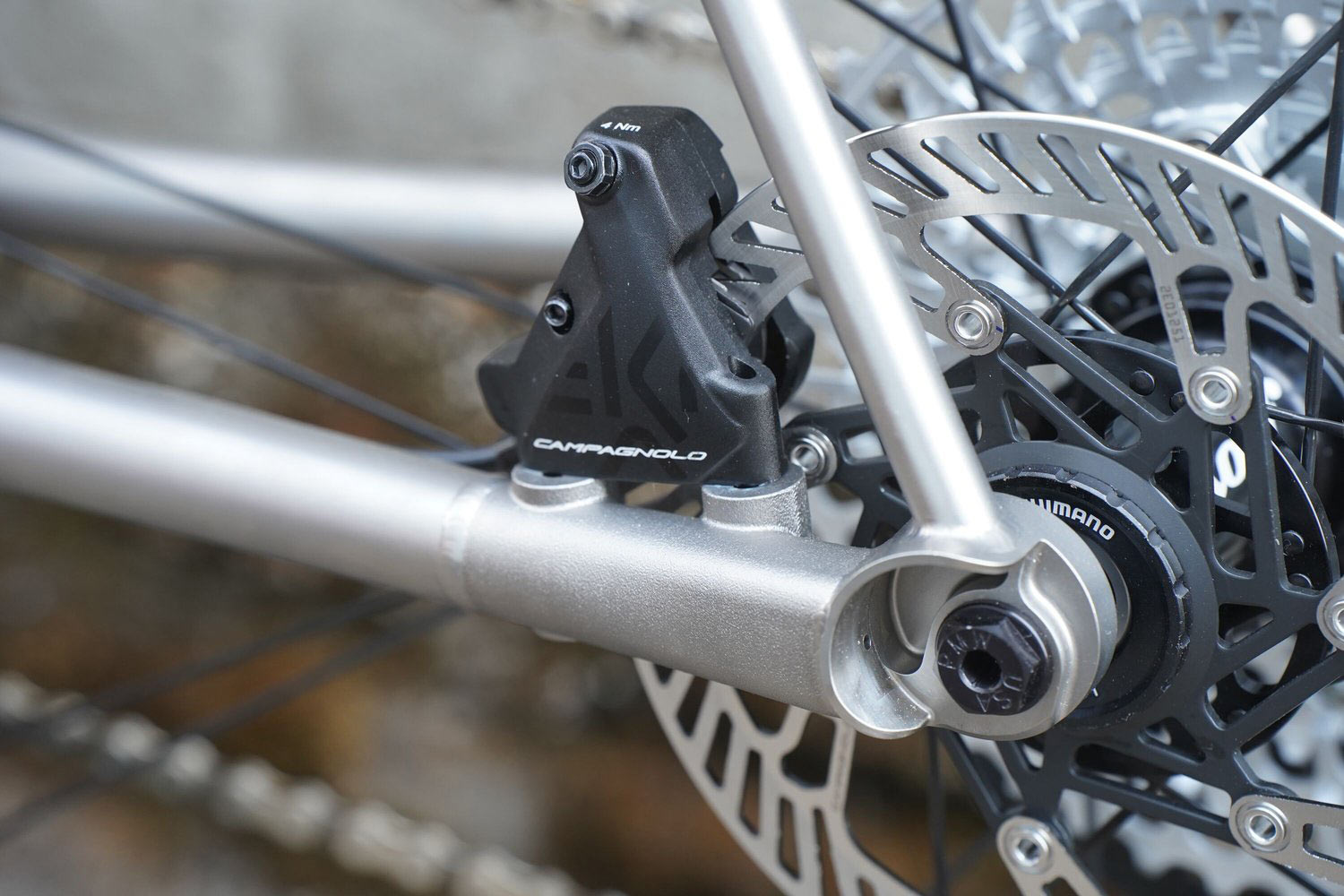
Both bikes have 3D-printed titanium driveside chainstay yoke and flat-mount disc brake mounts, the latter welded to hooded dropouts. The size-specific double-butted Reynolds 3/2.5 tubes are cold-worked and oversized for titanium’s signature ride quality and solid BB stiffness.
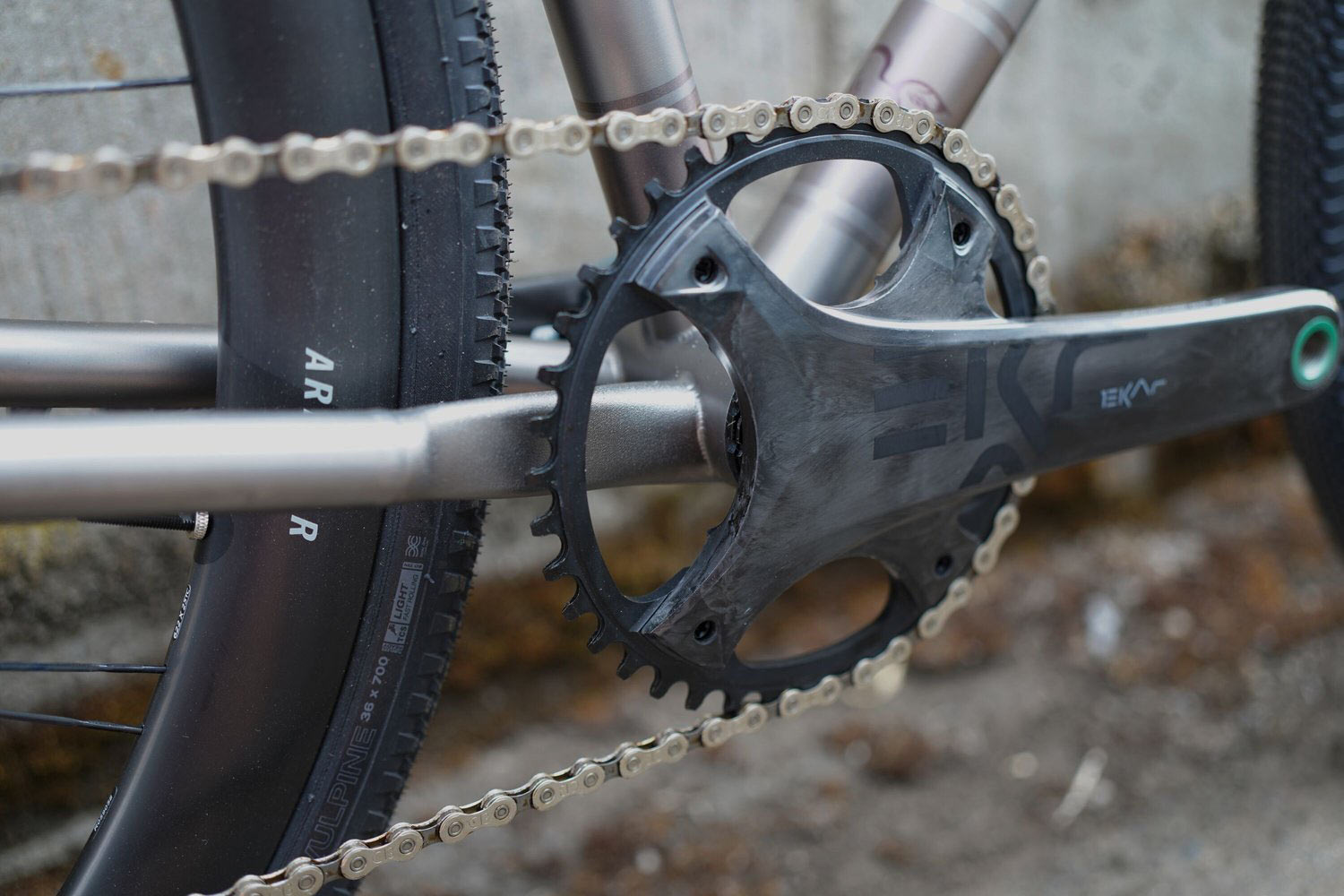
It has a T47 bottom bracket, US-made 44mm headtube, and claimed frame weight ranges from 2.8 to 3.0 pounds (1,361g) for medium sized frame, down to 1240g for a 52. Frame weights are “pretty customer dependent as we select the tubes even on stock frames to the customer’s weight, size, and particular riding style,” says Merlin’s Pete Olivetti. “If they dump a ton of power we use bigger tubes, or if they are looking for comfort and cruising will tube accordingly.”
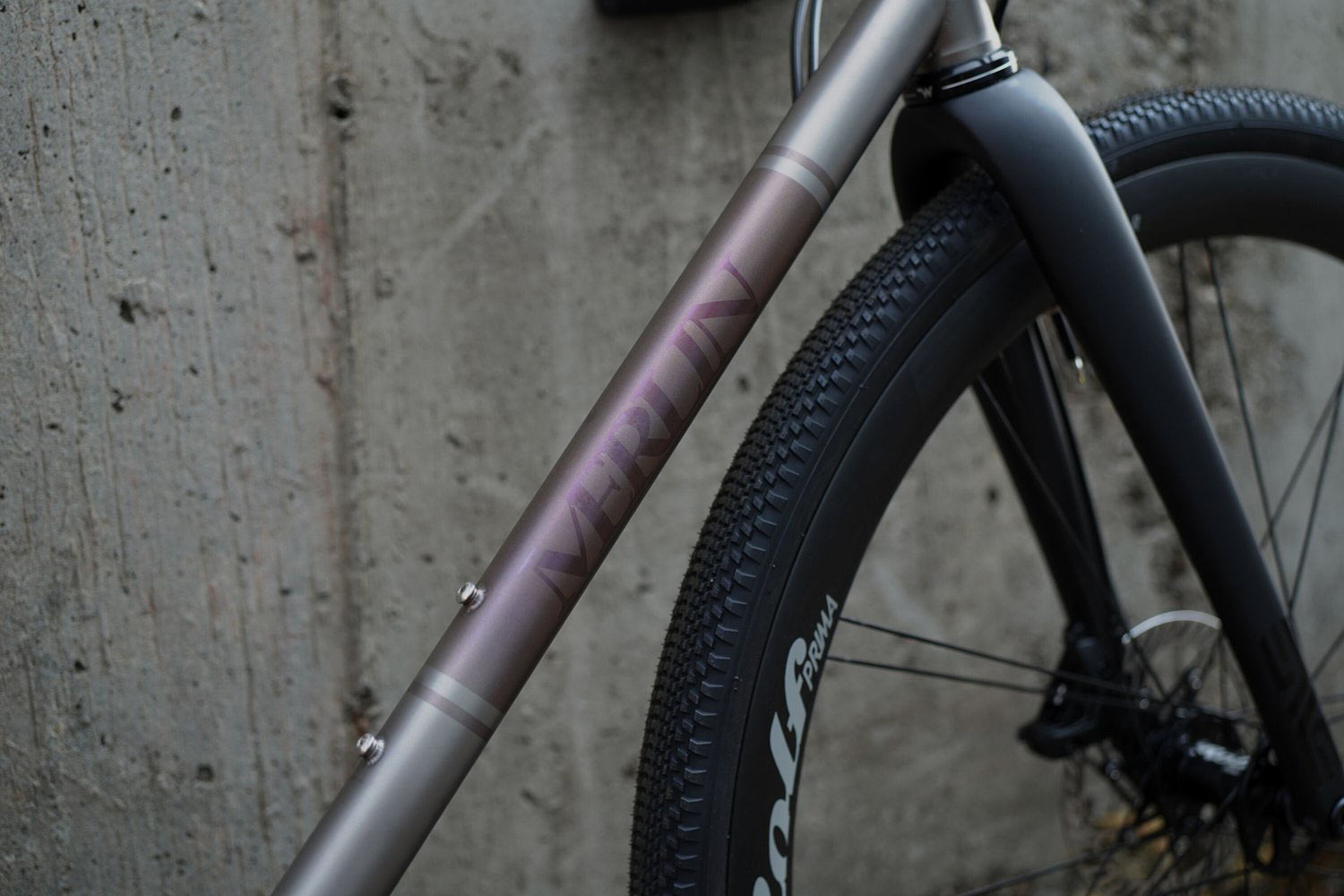
Frames start at $4,700 with build kits available upon request, fork and headset sold separately. Upgrade options include custom geometry, internal Di2 and EPS routing, internal brake routing, travel couplers, and extra mounts for racks, bottles, cages, etc. Each one is made to order in Colorado, lead time is ~3 months. Complete bikes start at $8,000.
